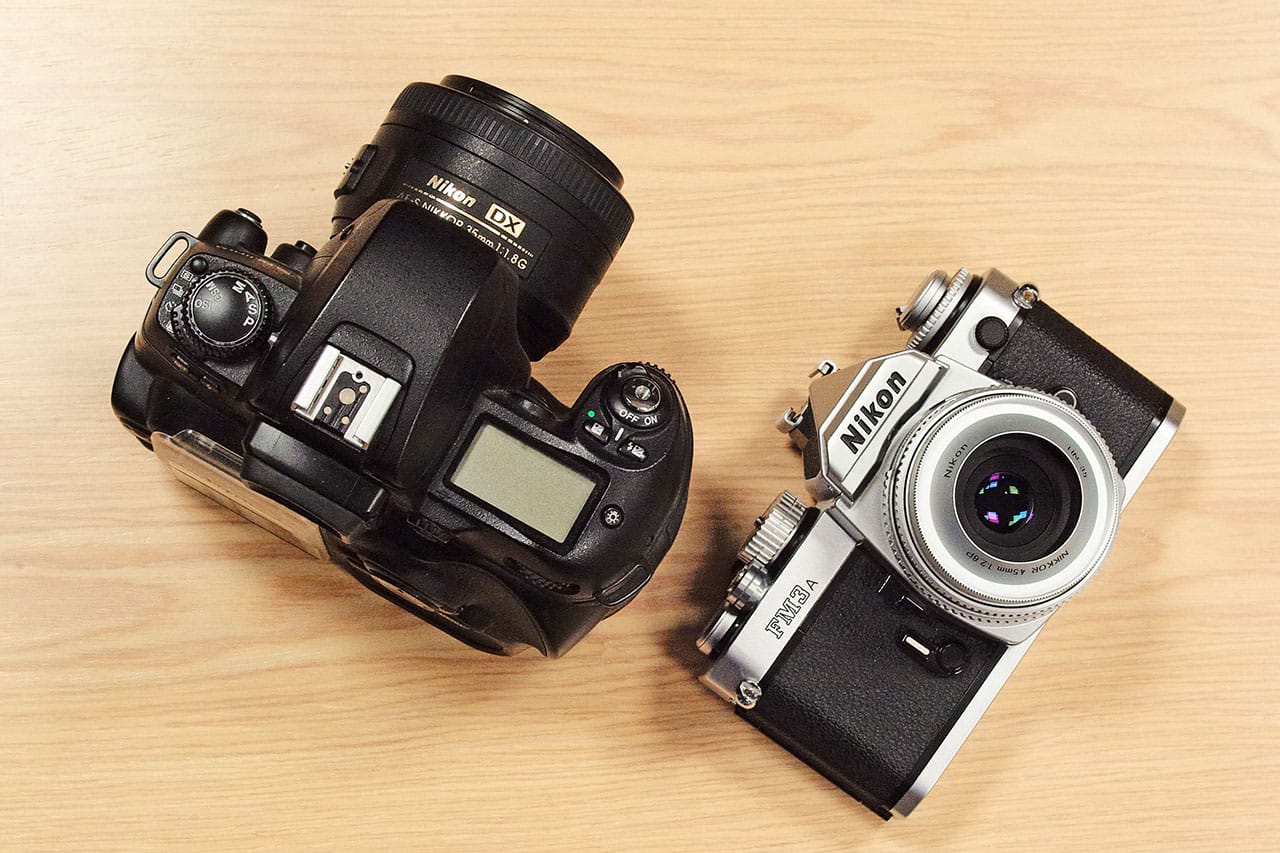

At the risk of bashing the Canon Elan 7, there is no comparison to the way the camera feels in your hand. When you pick up another camera from the ’90s, be it prosumer or not, you will notice a big difference in quality. It’s actually difficult to express just how nice this camera is to hold. It is nearly entirely made of a magnesium alloy, which lends to the very sturdy feeling you get when holding it. So, for me, there was no added benefit to the F6 despite it being hundreds (if not thousands) of dollars more, even used. With that said, those “shortcomings” have never bothered me, as I prefer using modern autofocus lenses (it’s the main reason I bought the camera), and I don’t ever foresee the day in which I would want to do long exposures on 35mm.
Nikon f6 vs f100 manual#
Not just that, the only shortcomings of the camera that the F6 corrects for is the ability to use the excellent metering system with older manual focus lenses and to use mirror lockup. When released, it was part of their prosumer line and is arguably the second-best modern film camera they ever made, second only to the F6, which is far and away more expensive. The Nikon F100 was released in 1999 and produced until 2006. On bigger ventures out where I was using one of my medium format cameras, a buddy of mine was armed with the F100, and though he had little experience with photography and no experience with film photography, he took some of my favorite photos of the trip. For short walks through the village where my friends live and in the evenings, I was keeping the F100 in hand. This benefit was more obvious than ever on my most recent (pre-COVID-19) big trip. In addition, and this is probably the best benefit to me, it is so easy to use that someone with no film experience and little to no digital camera experience can competently use it and produce some wonderful work.

As such, I put more rolls through the F100 than any other camera that I own. However, there are far fewer of those instances than times when I want to shoot around the house or on walks with the dog or whatever else may be nice to keep a camera by my side. Being that it is 35mm, it doesn’t always make it out of the house if I’d rather be shooting medium format.

To start, the Nikon F100 is all around the most utilitarian camera that I own. The value of this Nikon is almost impossible to beat. Even if you don’t, the F100 is still for you. Billy Yoder had used his Nikon F100 during his trip to Isla Sorna.If you’d like to get into film and you already have modern glass for a Nikon camera, the F100 is for you. During its production run, Nikon replaced the film rewind spool for these cameras due to a manufacturing defect. The F100 also provides many features which are common among high-end 35mm SLR cameras, such as automatic bracketing modes, DX film speed sensing, and custom functions which allow the photographer to tailor certain aspects of the camera’s operation to the way he or she works. The top motor drive speed can be boosted to 5 frames per second with the addition of the Nikon MB-15 battery pack. In addition to matrix metering, the F100 also offers standard center-weighted and spot metering modes.Īlso incorporated into the camera is a 4.5 frame per second motor drive with automatic rewind. The meter in the F100 utilizes a 10 segment light sensor and uses distance information from Nikon D-type and G-type lenses for more accurate exposure calculations. The F100’s metering system is a development of Nikon’s matrix metering technology introduced in 1983 on the Nikon FA. The F100 was discontinued, along with most other Nikon film cameras, in 2006. It is often thought of as a scaled-down version of the Nikon F5, and as a precursor to the Nikon F6. The Nikon F100 is a 35mm film-based single-lens reflex camera body introduced in 1999.


 0 kommentar(er)
0 kommentar(er)
